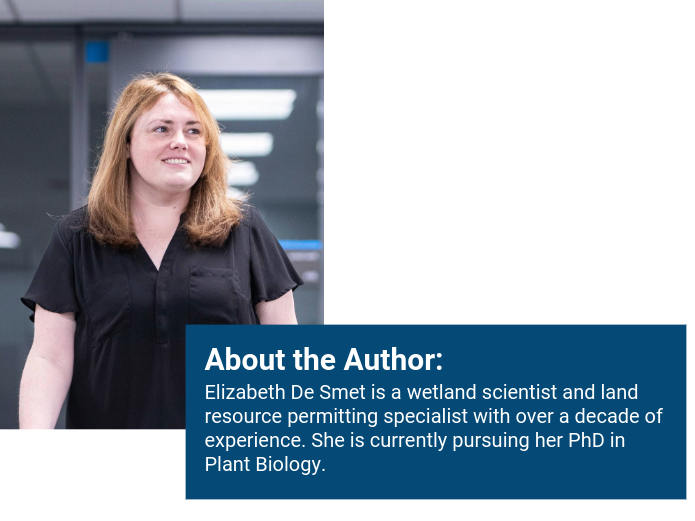SESI is hiring for Geotechnical, Environmental, and Site Civil positions. Apply Now!
Managing Natural Impacts by Engineering with Nature – The Wetlands
August 18, 2022

This year has brought more extreme weather and with it, the tightening of construction guidelines and insurance policies, reflecting the environmental risks and costs. Effects of increased rainfall alone include accelerated erosion and overwhelmed stormwater infrastructure, leading to higher rates of contamination migration. In the past, engineers imposed solutions on nature, layering manufactured patches to fix faltering systems. We can see that approach never fully addresses the problem and often has negative impacts on local plants and wildlife. Instead of fighting natural changes, there is a shift to engineering with nature. Success with this approach requires a strong understanding of both engineering concepts and the various facets of natural materials and habitats.
Once considered a hinderance to development, wetlands can be an advantage, as they reduce local impacts of increased rainfall and alleviate pressures farther along in the system – i.e. sewers, rivers, lakes, etc. To appreciate the vital role of wetlands, let us review what they are and how to distinguish where their boundaries lie.
Engineering with Nature- Wetlands
Wetlands are transitional areas between aquatic and terrestrial ecosystems. They are inundated or saturated by surface or ground water at a frequency and duration sufficient to support—and under normal circumstances do support—a prevalence of vegetation typically adapted for life in saturated soil conditions, commonly known as hydrophytic vegetation. Delineation of wetlands involves the evaluation of vegetation, soils, and hydrology. A transition area, or buffer, is an area of land adjacent to a freshwater wetland that minimizes adverse impacts on the wetland, serving as an integral component of the wetlands ecosystem.
New Jersey Wetland Regulations
New Jersey protects wetlands under the 1987 New Jersey Freshwater Wetlands Protection Act (N.J.S.A. 13:9B) and Rules (N.J.A.C. 7:7A). New York follows the regulations within the 1975 Freshwater Wetlands Act (Article 24). Utilizing these regulations, the New Jersey Department of Environmental Protection (NJDEP) and New York State Department of Environmental Conservation (NYSDEC) regulate the resource value of wetland and transition areas and the activities proposed within them. These wetland regulations protect wetlands and offer benefits to nearby development projects, including:
-
Soil Erosion Control
Wetlands surrounding surface waters protect shorelines and streambanks from erosion. The roots of wetland plants anchor soil and can reduce velocity of stream or river currents while filtering sediment out before it is discharged to waterbodies.
-
Improved Water Quality
Wetlands also intercept runoff forces prior to their reaching open water and remove both natural and manmade pollutants through physical, chemical, and biological processes. Therefore, wetlands provide a cost-effective alternative to traditional wastewater and stormwater treatment options.
-
Flood Abatement
Wetlands can play an important role in flood abatement, absorbing, storing, and slowing rain and melt water. This process minimizes flooding and stabilizes water flow. According to the Environmental Protection Agency (EPA), U.S. flood damages average $2 billion annually. A wetland can typically store 3-acre feet of water, the equivalent of $1 million.
-
Recreational Use
Wetlands can become a destination for outdoor enthusiasts with economic benefits estimated to be at least $34 million annually from recreational uses of wetlands such as birding, hunting, and fishing.
In addition to the many ways wetlands provide economic benefits, they offer numerous less-tangible benefits as well. These include providing aesthetic value to residential communities, providing habitat enhancement, and positively impacting the water supply. By nearly any measure used, it pays to preserve wetlands. SESI is here to help you navigate this delicate landscape and utilize your onsite wetlands in the most efficient way possible, while preserving the natural ecosystem. Delineating properties to ensure compliance with regulations and permitting projects and facilitating the greatest economic benefit to support your endeavors is our top priority.









